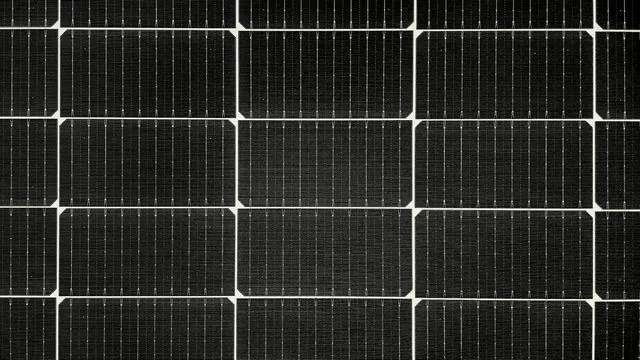
Breakthrough in Organic Solar Cells: Key to Unlocking Efficiency
2024-11-04
Author: Michael
Breakthrough in Organic Solar Cells: Key to Unlocking Efficiency
A pivotal study conducted by researchers at North Carolina State University has unveiled crucial insights into the internal workings of organic solar cells, shedding light on the interface where sunlight is transformed into electrical energy. This groundbreaking research introduces innovative visualization methods that reveal the dynamics at play within these cells, enabling the development of new design rules aimed at enhancing their efficiency.
Organic solar cells are composed of carbon-based polymers, which not only promise lower production costs but also utilize earth-abundant materials. These solar cells offer unique features, including the ability to be manufactured into semi-transparent or transparent applications, such as windows. Their lightweight, thin-film nature makes them ideal candidates for flexible solar technologies that support roll-to-roll manufacturing, leading to easier transportation and installation.
Despite their advantages, organic solar cells have historically lagged behind traditional silicon and the emerging perovskite solar technologies regarding their ability to effectively convert light into electricity.
"Essentially, organic solar cells combine two materials," explained Aram Amassian, a professor of materials science and engineering at NC State and co-author of the study. These materials work together to harness solar energy, with one acting as the donor that captures electrons from sunlight, and the other, a smaller molecule, serving as the acceptor that receives these electrons. However, the interfaces between these donor and acceptor materials have been a source of voltage loss, severely limiting the efficiency of these systems. The primary goal of this study was to dissect these interface dynamics to discover how to improve them.
To address the challenge of understanding voltage losses, the researchers devised an advanced scanning-probe microscopy technique, which allowed them to map not only the surface characteristics of the donor and acceptor combination but also the energetic properties at their interfaces. This involved studying how the energy gradient and molecular arrangement at the interface affected overall performance.
"We determined how molecular disorder at the interface impacted energy loss," noted Daniel Dougherty, another co-author and physics professor at NC State. Their findings helped compare these newly observed energy characteristics with traditional methods that measure the voltage loss in organic solar cells.
One of the challenges faced was that the microscopy technique could not pinpoint which particular interface contributed most significantly to voltage loss, as the blend yielded multiple types of interfaces simultaneously. However, the study identified that the sharp interface between donor and acceptor materials, particularly in high-performance organic solar cells like PM6:Y6, is critical when addressing voltage losses.
Once the offending interface was identified, the researchers explored which factors contributed to this voltage loss. The study resolved a long-standing contention in the solar cell community, confirming that both energy differentials and energetic disorder at interfaces play a role in voltage loss.
In a significant breakthrough, the team demonstrated that modifying the blending process of the donor and acceptor materials could minimize energy differentials and reduce interfacial disorder—essentially "fixing" the issues that lead to energy loss.
Amassian expressed optimism regarding the implications of their findings. “By picking material pairs with minimal energy offsets, and adjusting solvents and processing conditions to decrease interfacial disorder, we believe our design rules can greatly influence future organic solar cell advancements.”
In a world increasingly reliant on renewable energy sources, this research presents a promising avenue towards optimizing organic solar cell efficiency, potentially revolutionizing solar energy technologies and paving the way for broader applications.
As the quest for sustainable energy solutions continues, the advances in organic solar cells could significantly alter the landscape of solar technology, bringing us one step closer to affordable and efficient solar energy solutions for everyone.









 Brasil (PT)
Brasil (PT)
 Canada (EN)
Canada (EN)
 Chile (ES)
Chile (ES)
 España (ES)
España (ES)
 France (FR)
France (FR)
 Hong Kong (EN)
Hong Kong (EN)
 Italia (IT)
Italia (IT)
 日本 (JA)
日本 (JA)
 Magyarország (HU)
Magyarország (HU)
 Norge (NO)
Norge (NO)
 Polska (PL)
Polska (PL)
 Schweiz (DE)
Schweiz (DE)
 Singapore (EN)
Singapore (EN)
 Sverige (SV)
Sverige (SV)
 Suomi (FI)
Suomi (FI)
 Türkiye (TR)
Türkiye (TR)